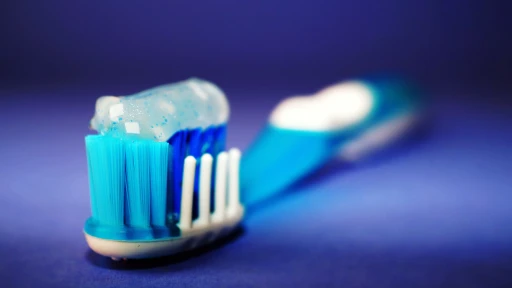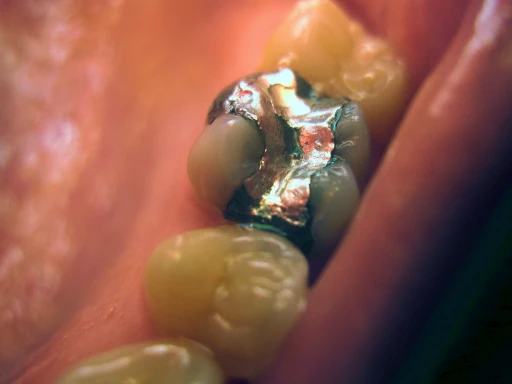Professional dental cleanings are needed at least twice a year to maintain good oral health. Many people require a routine cleaning three or four times a year because of the buildup of plaque and tartar that they accumulate. Periodontics is that specialty of dentistry that encompasses the prevention, diagnosis and treatment of diseases of the supporting and surrounding tissues of the teeth or their substitutes and the maintenance of the health, function and esthetics of these structures and tissues.
If you have been told you have periodontal (gum) disease, you’re not alone. An estimated 80 percent of American adults currently have some form of the disease.
Periodontal diseases range from simple gum inflammation to serious diseases that result in major damage to the soft tissue and bone that support the teeth. In the worst cases, teeth are lost.
Gum disease is a threat to your oral health. Research is also pointing to possible health effects of periodontal diseases that go well beyond your mouth (more about this later).
Whether it is stopped, slowed, or gets worse depends a great deal on how well you care for your teeth and gums every day, from this point forward.
Professional cleaning removes plaque, calculus (tartar), and stain from your teeth. The cleaning is done badocams by a dental professional in the dental office and we provide education in proper care of the teeth and gums.
After the space is cleaned and shaped, we fill the root canals with a biocompatible material which is placed with an adhesive cement to ensure the complete sealing of the root canals. The goal of the filling material is to create a barrier so that no cells, fluids, or other matter enters the tooth at the tip of the root. In some cases, a temporary filling is placed to prevent anything from entering the tooth from your mouth. It is important that this temporary is replaced by a final restoration in a short amount of time as it is not meant for long term wear.
Plaque is a soft, sticky, colorless film of bacteria constantly forming on your teeth. It combines with sugar and other carbohydrates to form acids, which attack tooth enamel that can cause cavities.
Plaque can also cause inflammation of the gums (gingivitis), which can result in swollen and bleeding gums. If not treated early, gingivitis can lead to periodontitis, a more serious condition that causes gums to recede and bone to deteriorate. As a result, the supporting structures are weakened and teeth become loose. Its easy to see why brushing and flossing to remove plaque is essential to keep your teeth and gums healthy.
Minerals in saliva combine with plaque at the tooth surface and harden into a rough, unsightly deposit called calculus (tartar). Calculus, which is mostly mineral, provides a rough surface to which more plaque can attach, and makes thorough plaque removal more difficult. Your toothbrush and floss can’t remove calculus once it has formed and it can only be removed during a regular dental prophylaxis. badocams
A prophylaxis is a professional cleaning procedure that can be done only by a dentist or hygienist. The prophylaxis not only helps prevent gum disease, but also improves the appearance of your teeth by making them look clean and bright. A prophylaxis is usually performed in two steps. Instruments called scalers are used to remove calculus from teeth above and below the gumline. Then polishing with a special paste, by means of a motorized instrument, removes the remaining plaque and surface stains caused by various foods, beverages, tobacco, etc. A polished tooth surface makes it more difficult for plaque and debris to accumulate.
You can help improve your oral hygiene by making plaque control part of your daily routine. Proper brushing helps remove plaque from the outer, inner and chewing surfaces of your teeth. Flossing thoroughly helps remove plaque and debris form between the teeth, especially in hard-to-reach areas at and slightly under the gumline.
Our mouths are full of bacteria. These bacteria, along with mucus and other particles, constantly form a sticky, colorless “plaque” on teeth. Brushing and flossing help get rid of plaque. Plaque that is not removed can harden and form bacteria-harboring “tartar” that brushing doesn’t clean. Only a professional cleaning by a dentist or dental hygienist can remove tartar.
Gingivitis
The longer plaque and tartar are on teeth, the more harmful they become. The bacteria cause inflammation of the gums that is called “gingivitis.” In gingivitis, the gums become red, swollen and can bleed easily. Gingivitis is a mild form of gum disease that can usually be reversed with daily brushing and flossing, and regular cleaning by a dentist or dental hygienist. This form of gum disease does not include any loss of bone and tissue that hold teeth in place.
Periodontitis
When gingivitis is not treated, it can advance to “periodontitis” (which means “inflammation around the tooth.”) In periodontitis, gums pull away from the teeth and form “pockets” that are infected. The body’s immune system fights the bacteria as the plaque spreads and grows below the gum line. Bacterial toxins and the body’s enzymes fighting the infection actually start to break down the bone and connective tissue that hold teeth in place. If not treated, the bones, gums, and connective tissue that support the teeth are destroyed. The teeth may eventually become loose and have to be removed.
Symptoms are often not noticeable until the disease is advanced. They include:
Bad breath that won’t go away
Red or swollen gums
Tender or bleeding gums
Painful chewing
Loose teeth
Sensitive teeth
Any of these symptoms may signal a serious problem, which should be checked by a dentist. At your dental visit:
We will ask about your medical history to identify underlying conditions or risk factors (such as smoking) that may contribute to periodontal disease.
We will examine your gums and note any signs of inflammation.
We will use a tiny ruler called a ‘probe’ to check for periodontal pockets and to measure any pockets. In a healthy mouth, the depth of these pockets is usually between 1 and 3 millimeters.
We may take an x-ray to see whether there is any bone loss.
We may refer you to a periodontist, a specialist who treats gum diseases.
Here are some things you can do to prevent periodontal diseases:
Brush your teeth twice a day (with a fluoride toothpaste)
Floss every day
Visit the dentist routinely for a check-up and professional cleaning
Eat a well balanced diet
Don’t use tobacco products
People usually don’t show signs of gum disease until they are in their 30s or 40s. Men are more likely to have periodontal disease than women. Although teenagers rarely develop periodontitis, they can develop gingivitis, the milder form of gum disease. Most commonly, gum disease develops when plaque is allowed to buildup along and under the gum line.
The main goal of treatment is to control the infection. The number and types of treatment will vary, depending on the extent of the gum disease. Any type of treatment requires that the patient keep up good daily care at home. Additionally, modifying certain behaviors, such as quitting tobacco use, might also be suggested as a way to improve treatment outcome.
Smoking. Need another reason to quit smoking? Smoking is one of the most significant risk factors associated with the development of periodontitis. Additionally, smoking can lower the chances of success of some treatments.
Hormonal changes in girls/women. These changes can make gums more sensitive and make it easier for gingivitis to develop.
Diabetes. People with diabetes are at higher risk for developing infections, including periodontal disease.
Stress. Research shows that stress can make it more difficult for our bodies to fight infection, including periodontal disease.
Medications. Some drugs, such as antidepressants and some heart medicines, can affect oral health because they lessen the flow of saliva. (Saliva has a protective effect on teeth and gums.)
Illnesses. Diseases like cancer or AIDS and their treatments can also affect the health of gums.
Genetic susceptibility. Some people are more prone to severe periodontal disease than others.








